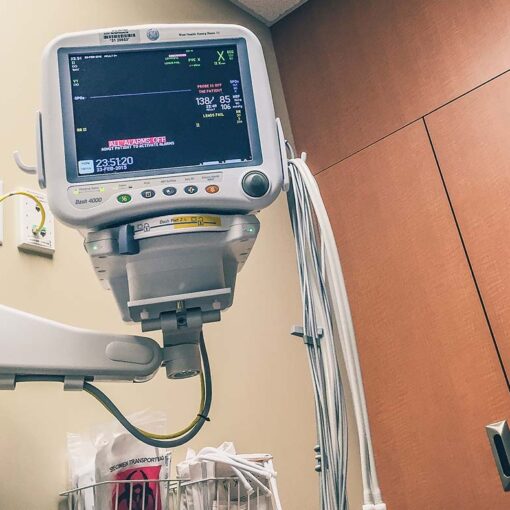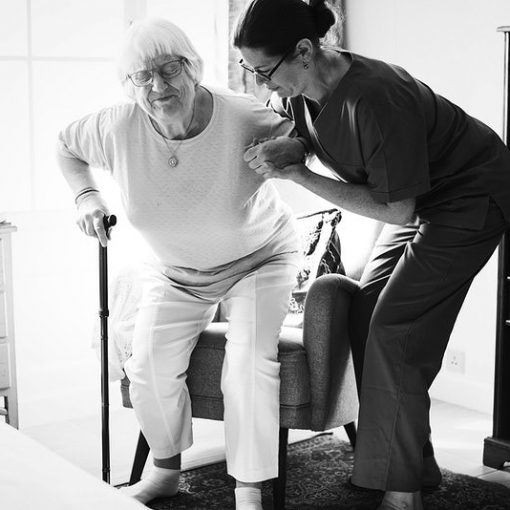Student exchanges abroad offer students much more than just practical theoretical knowledge or language skills. At their best, student exchanges can help students to understand other models of healthcare system and thus to understand the pros and cons of the Finnish healthcare. By gaining new perspectives on things, students can come up with solutions to improve their own system in the future as a health care professionals. The student exchange in autumn 2023, in collaboration with Edge Hill University, enabled four LAB students to dive deeper into the UK emergency medical service – EMS – and to see how it is organised in practice in Manchester.
![[Alt text: an old and huge building with lawn and flowers in front of it.]](https://blogit.lab.fi/labfocus/wp-content/uploads/sites/8/2024/01/11_2024_A-deep-dive-exploring-the-differences-between-two-emergency-medical-services-1024x512.jpg)
Organizational structure differences
Organizational structures of emergency medical services in the UK and Finland differ significantly. The United Kingdom typically uses a hierarchical framework, emphasizing clearly defined lines of authority within paramedic teams. In the UK, the paramedic profession has various levels of practice, including roles such as emergency medical technician, paramedic, critical care paramedic, and consultant paramedic. Paramedics in the UK are involved in academic research and education, and there are opportunities for career development, allowing paramedics to specialize in specific areas and take on more responsibility. In an emergency, this structure promotes a clear chain of command, ensuring efficient communication and accountability. (NHS 2023)
On the other hand, Finland favors a more collaborative and flatter organizational structure. This approach promotes a culture of collaboration and shared decision-making among paramedics, fostering a more inclusive and cooperative environment in the delivery of emergency medical services. In Finland, the EMS consists of two levels: basic and advanced. Basic-level ambulances primarily handle non-urgent assignments where the patient’s condition is stable and are usually staffed by emergency medical technicians. Advanced-level ambulances can provide more comprehensive care, including initiating treatment and securing a patient’s vital functions at the scene and during transport. (Venesoja et al. 2023)
In Finland, paramedics collaborate and often have a high degree of autonomy. Their responsibilities extend beyond emergency response to include health promotion and prevention activities. Moreover, Interprofessional collaboration is highly valued in Finland. Paramedics collaborate closely with other healthcare professionals, such as nurses and physicians, to provide patient care as a team (LAB 2023).
Towards the same goal
Different systems around the world have been built differently for historical, geographical and cultural reasons, among others. However, almost all systems have the same goal: to provide the most effective and timely help to those who need it, so that people can live as healthy life as possible for as long as possible. By opening our eyes, we can try to get closer to this goal, and student exchanges are an excellent way to open students’ eyes for the future.
Authors
Atieh Rezaei is a third-year paramedic student at LAB University of Applied Sciences.
Tuomo Nyyssönen is a Senior Paramedic Lecturer and also working as a tutor teacher in paramedic program at LAB University of Applied Sciences.
References
LAB. 2023. Paramedic Nurses recognize, anticipate and assess patient care needs. LAB University of Applied Sciences. Cited 18 Dec 2023. Available at https://lab.fi/fi/koulutus/bachelor-health-care-paramedic-nurse-full-time-studies-lappeenranta-240-op?gad_source=1&gclid=CjwKCAiA-P-rBhBEEiwAQEXhH4DroLZAMEGWCBzn0vBaiz6BEUTgrTP6w2imCsva18yuW3Z61IoDdBoCqX4QAvD_BwE
NHS. 2023. Roles in the ambulance service. National Health Service. Cited 18 Dec 2023. Available at https://www.healthcareers.nhs.uk/Explore-Roles/Ambulance-Service-Team/Roles-Ambulance-Service
Venesoja, A., Tella, S., Castrén, M. & Lindström, V. 2023. Finnish emergency medical services managers’ and medical directors’ perceptions of collaborating with patients concerning patient safety issues: a qualitative study. BMJ Journals. Cited 18 Dec 2023. Available at https://bmjopen.bmj.com/content/13/4/e067754




